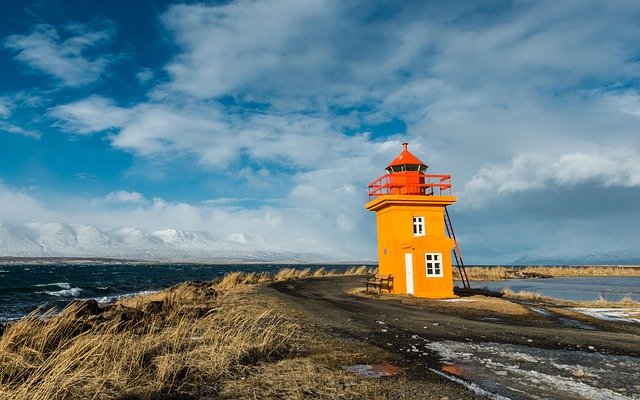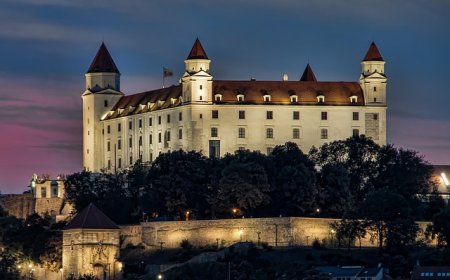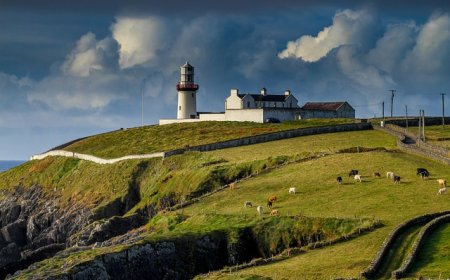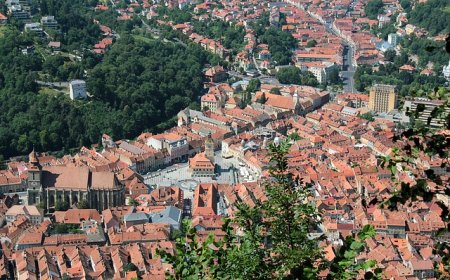Iceland: Geography, Culture, and Volcanoes for Students
Explore Iceland’s volcanoes, geysers, glaciers, and Viking history in this student-friendly article. Learn about Reykjavik, Icelandic culture, and the land of fire and ice.

🇮🇸 Iceland: Fire, Ice, and Natural Wonder
🗺 Introduction
Iceland is a land of extremes, where volcanoes and glaciers exist side by side. Known as the “Land of Fire and Ice,” this island nation in the North Atlantic Ocean is famous for its natural beauty, active landscapes, and strong connection to Viking history. Even though it has a small population, Iceland is one of the most unique and environmentally friendly countries in the world.
In this article, you’ll learn about Iceland’s amazing geography, ancient roots, modern lifestyle, and rich traditions. From steaming geysers to singing sagas, Iceland is a country full of discovery.
🌍 Geography and Location
Iceland is an island nation located just below the Arctic Circle, between Greenland and Norway, with the Atlantic Ocean on all sides. Despite its name, Iceland isn’t all ice—it actually has more green valleys than icy fields, while Greenland is much icier!
The country sits on the Mid-Atlantic Ridge, where two of Earth’s tectonic plates meet. This makes Iceland one of the most geologically active places on Earth, filled with volcanoes, geysers, hot springs, and earthquakes.
Iceland also has glaciers that cover about 11% of its land, including Vatnajökull, the largest glacier in Europe. Because of the volcanic activity, people use geothermal energy to heat homes and generate electricity.
🏙 Cities and Regions
The capital of Iceland is Reykjavík, the northernmost capital city in the world. Though it’s small compared to other European cities, Reykjavík is full of energy, color, and creativity. It has museums, modern art, music festivals, and cozy cafes. The city is also a leader in using clean energy and protecting the environment.
Other regions include:
- The Golden Circle, a popular tourist route featuring geysers, waterfalls, and national parks
- Akureyri, the largest town in northern Iceland, close to ski slopes and whale-watching spots
- The Westfjords, one of Iceland’s most remote and wild areas, filled with cliffs and wildlife
Iceland is divided into regions and municipalities, but most people live along the coast, where the land is more fertile and the climate milder.
👨👩👧👦 People, Language, and Culture
Iceland has a population of about 390,000 people, making it one of the least populated countries in Europe. Most Icelanders live in the southwest, near Reykjavík. The country is known for its strong sense of community and high levels of literacy and education.
The official language is Icelandic, which is closely related to Old Norse, the language of the Vikings. It hasn’t changed much in 1,000 years, so modern Icelanders can still read ancient Viking texts called sagas.
Icelandic culture values independence, nature, and creativity. Many people believe in old legends about elves and trolls, and nature is often treated with deep respect. Families enjoy storytelling, music, and outdoor adventures all year long.
🍽 Food and Traditions
Icelandic food comes from the sea, farms, and the harsh northern climate. Fish, lamb, dairy, and potatoes are staples of the Icelandic diet. Because of the cold weather and short growing season, people have always found creative ways to preserve food.
Traditional dishes include:
- Plokkfiskur, a creamy fish stew with potatoes
- Lamb soup made with root vegetables
- Skyr, a thick, yogurt-like dairy snack
- Rúgbrauð, a dark rye bread baked in geothermal heat
- Pönnukökur, thin pancakes often filled with jam or whipped cream
Some old Viking foods, like fermented shark (hákarl), are still eaten on special occasions but are not part of daily meals.
One of the biggest holidays is Þorrablót, a winter festival that celebrates Icelandic heritage with traditional music, dance, and food. Icelanders also celebrate National Day on June 17, marking their independence from Denmark in 1944.
🏛 History of Iceland
Iceland was first settled in the late 800s by Vikings from Norway and their Celtic companions from Ireland and Scotland. These early settlers created the Althing, one of the world’s oldest parliaments, in the year 930 CE.
Iceland remained independent until it became part of Norway and later Denmark. In 1944, Iceland became a fully independent republic. Despite its small size, it has maintained its language, literature, and strong democratic traditions.
During the 20th century, Iceland grew from a farming and fishing society into a modern country. It stayed neutral in world wars, joined the United Nations, and today takes part in many international peace efforts.
🌿 Nature and Environment
Iceland’s natural environment is one of the most spectacular in the world. From waterfalls and volcanoes to black sand beaches and glacier lagoons, the landscape is always changing and full of beauty.
Wildlife in Iceland includes Arctic foxes, puffins, seals, and whales. There are few trees in most parts of the country, but many mosses, lichens, and wildflowers grow in the lava fields.
Because of its volcanic activity, Iceland uses geothermal energy to heat homes, schools, and even swimming pools. Icelanders care deeply about keeping their land clean and safe for future generations.
🧠 Why Iceland Matters
Iceland may be small, but it’s a big example of how a country can protect the environment, celebrate history, and live sustainably. It’s a land of strong traditions, scientific discovery, and artistic creativity.
Whether through its unique energy systems, ancient sagas, or peaceful lifestyle, Iceland teaches the world how to live with nature—and how to thrive, even on the edge of the Arctic Circle.
📚 Vocabulary List
| Word | Definition |
|---|---|
| Geyser | A natural hot spring that sprays water and steam into the air |
| Glacier | A slow-moving river of ice that forms in cold mountain areas |
| Saga | A long story about heroes and history, often from Viking times |
| Geothermal | Heat from beneath the Earth, used for energy in Iceland |
| Volcano | A mountain that erupts with lava, ash, and gases |
| Icelandic | The language spoken in Iceland |
| Althing | One of the world’s oldest parliaments, created in Iceland in 930 CE |
| Hákarl | Fermented shark, a traditional Icelandic food |
✨ Fun Facts About Iceland
Iceland has no army, navy, or air force.
In summer, the sun stays up all night in the far north.
About 60% of Icelanders believe in elves or “hidden people.”
Iceland has over 130 volcanoes, many of which are still active.
Reykjavík means “Smoky Bay,” named for the steam from hot springs.
👧🧒 Kid-Friendly Summary
Iceland is a magical island with volcanoes, waterfalls, and glaciers. People speak Icelandic and still read Viking stories from long ago. They eat fish, bread baked in hot ground, and yummy yogurt called skyr. There are geysers, puffins, and northern lights to explore. Iceland is small but super special, and it’s full of nature, history, and adventure.
🧠 Interactive Quiz: How Well Do You Know Iceland?
1. What is the capital of Iceland?
A) Oslo
B) Helsinki
C) Copenhagen
D) Reykjavík
2. What is a geyser?
A) A frozen waterfall
B) A lava tunnel
C) A hot spring that shoots water and steam
D) A type of mountain
3. Which two elements give Iceland the nickname “Land of Fire and Ice”?
A) Sun and Moon
B) Volcanoes and Glaciers
C) Thunder and Lightning
D) Rain and Wind
4. What is Iceland's ancient parliament called?
A) The Thing
B) Althing
C) North Council
D) Ice Rule
5. What language do people speak in Iceland?
A) Danish
B) Norwegian
C) Icelandic
D) English
6. What kind of bread is baked using geothermal heat?
A) Pita bread
B) Baguette
C) Rúgbrauð
D) Ciabatta
7. What is Iceland’s most famous dairy snack, similar to yogurt?
A) Skyr
B) Kefir
C) Butter
D) Lassi
8. Why do many people believe in elves or hidden folk in Iceland?
A) Because of fairy tales from other countries
B) Because of traditions linked to nature and stories passed down
C) Because they see them every day
D) Because of TV shows




















































